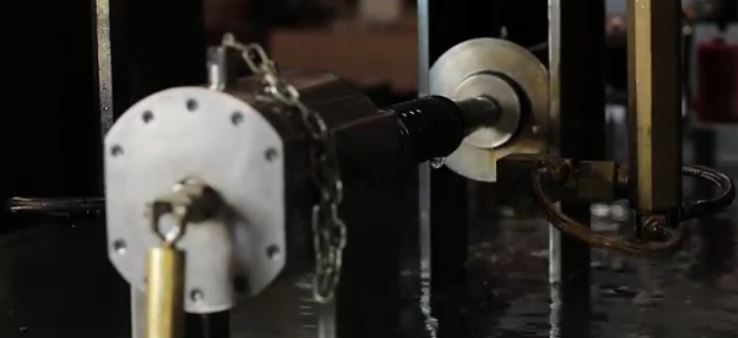Hardness pattern problems

This week we’re getting into more refined problems related to heat treating – namely, uneven hardness patterns and a hardness pattern that doesn’t go deep enough to meet spec. We see these problems surface not infrequently, but they tend to be very application specific.
Uneven hardness patterns become an issue only when the range of Rockwell measurements becomes too wide. You can usually tolerate 3-4 hardness points difference in the same part, but when differences reach 5 and up it’s a quality issue for most manufacturers. Too, Rockwell measures hardness only at the surface. Destructive testing – cutting the part — gets you the depth measurement.
As I’ve mentioned in previous blogs, the design of the heat treating solution should take into account any geometric particularities of the part which may allow some areas to heat faster than others. If that is the case, uneven heat leads to uneven hardness patterns in both your depth and Rockwell hardness levels. In these cases we generally try to take heat away from the areas that are getting too much, by introducing some type of heat sink particular to that area. Again, your hardness level should vary no more than 4 points; depth should be within tolerance, usually 1/8” for 1045, for example.
Also, as I have said before, it’s not just the heat. Uneven agitation in the quench can cause uneven hardness levels and depth. You want the quench action to hit all areas of the part with the same force and direction. We have added lengths of pipe to better control the direction of the quench and solved uneven hardness issues that way.
Depth of the hardness pattern is key. Some parts need a particular depth because hardening may not be the last step in the manufacturing process. If machining occurs after heat treating, too shallow hardness patterns can be machined off. Some parts are designed for a longer service life because with a deeper hardness level the part can sustain more wear and tear – and can even be repaired. Your material also determines the depth and hardness level that’s going to be optimum for the part. Typical depth for 1045 steel is 1/8” at 60 Rockwell. 1050 steel gets to ¼” at 60. 4140 takes more time to quench out, so it loses hardness points. The most you would expect would be 56 Rockwell at ¼” deep.
So how do you troubleshoot a shallow hardness pattern with flame hardening? Here are some common corrections we use for this problem:
• What is the ratio of oxygen to gas in the flame? A flame with too much oxygen burns too hot, so the surface of the part gets too hot before it can sink in to the required depth. Increase the amount of fuel gas to cool the flame so that heat can sink in without burning or melting the surface.
• What is the temperature of the quenchant? Your quenchant can be too warm for the optimum cooling time to achieve the isothermal transformation. It has to be the correct temperature to cool for the right amount of time to get the depth for your specific material. The longer time a material takes to quench before achieving Martensite, the more depth it can get, but if the quenchant is too warm the higher temps will stretch it out too long to get the correct depth and optimum structure.
• What is the position of the flame head? If your flame head is not at the correct coupling distance (surface of flame head vis a vis surface of part) – you will lose the optimum temperature to sink heat into the part. Typically a good coupling distance is 7/16”.
• Is the heat cycle the correct length for the material? Heating for too short a time creates a very shallow pattern, so if you have an even pattern but shallow depth look to increase your heat time. Conversely, if your heat treating cycle is too long and hot, you can actually “decarb” the steel. Decarb softens the surface, creating a thin (about 0.010”) layer under which you get the proper depth and hardness level. Decarb throws off a lot of folks trying to troubleshoot this problem because it appears that you aren’t achieving the hardness, when you actually are but just not where you want it. The correct cycle times and temperatures of both the heat treating and cooling cycles transform the particular material of the part into Martensite. These vary by material and mass.
As always, if you want to ask me about any heat treating problems you’re experiencing, or anything related to flame hardening as well, email me at mark@flametreatingsystems.com or call 919-956-5208. Remember, it’s not just the heat, it’s the cool!
B7: We want to know your opinion.






